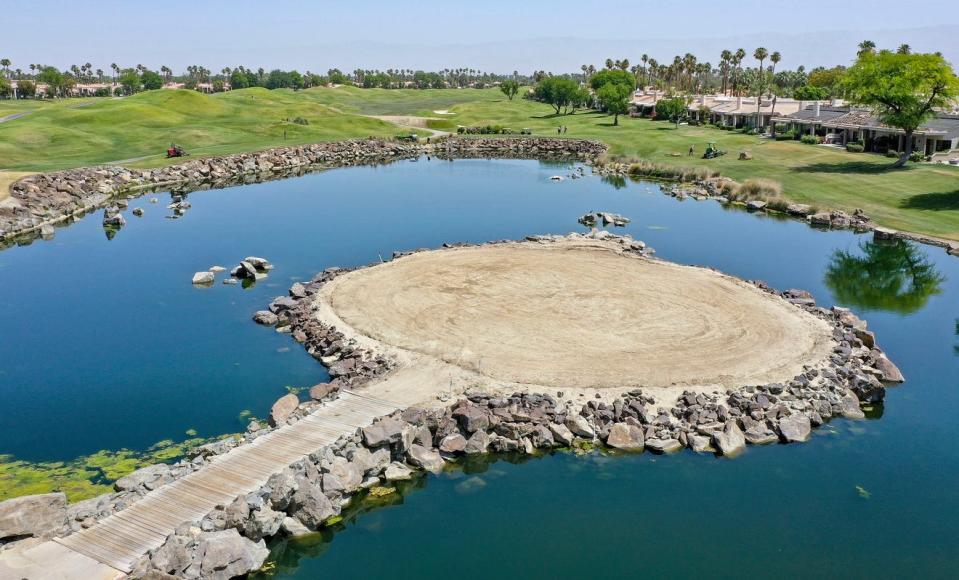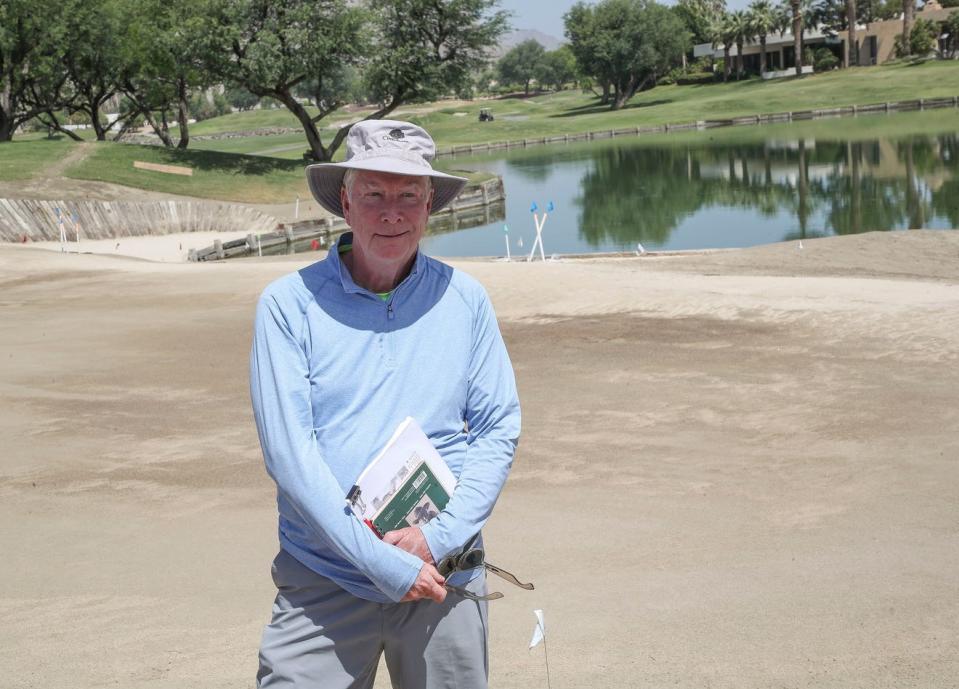This PGA Tour golf course is getting revamped bunkers — and a 1986 feel

Tim Liddy says the renovation of all 18 green complexes at the Pete Dye Stadium Course at PGA West is like an archaeological dig. In this case, Liddy and the agronomy team at PGA West are looking for the original greens on the golf course from 1986.
“The thing that I have struggled with that we got through with the owner is do you want a 1986 Pete or do you want a 2020 Pete,” said Liddy, who worked closely with the famed architect Dye for many years and is helping to return the course to its original concept of greens and bunkering. “They said we want a 1986 Pete. So that tells me, okay, that’s not what he would have done today, but it’s what we did in 1986.”
The renovation of all 18 greens as well as the practice putting area at the Stadium Course, the host course of the PGA Tour’s The American Express tournament each January, means the course will be closed throughout the summer.
Plans are to renovate more than 12 acres of turf and bunkers on the course in time for the course to reopen after a normal overseed in the fall, meaning the course will be ready for The American Express.
This summer is the completion of a three-year renovation project at the Stadium Course that saw work on fairways and the removal of trees that had grown drastically in the nearly 40 years since the golf course opened as one of the most talked about and controversial courses in the country.
Golfweek’s Best: Top public and private courses in California
Dye’s extensive use of water, railroad ties, spectator mounding and a variety of bunkers from pot bunkers to moats caused criticism from players in the 1986 American Express, then called the Bob Hope Classic. But much of what Dye designed into the La Quinta course is now standard at many PGA Tour courses and even resort courses.
“He was ahead of his time,” Liddy said. “My impression was he saw the golf ball was getting longer and the driver was getting bigger and the players were getting more talented, more athletic. I think he foresaw all of that.”
The PGA Tour left the Stadium Course after that one playing in 1986, but the course returned to the tournament in 2016 as host course.
In the 38 years since the players grumbled in 1986, the courses have naturally changed. Liddy, director of agronomy Brian Sullivan, resort courses superintendent Denver Hart and a construction team from LeBar Golf Renovations want to take the course back to when it opened.
Shaving the course

Tim Liddy, a golf architect who worked with Pete Dye, is helping to restore Dye’s Stadium Course at PGA West to its original 1986 conditions. (Photo: Jay Calderon/The Desert Sun)
A large part of the project involves shaving at least four inches of turf off of the greens, material that simply builds up through the years, to find the original green surfaces. Then the team searches for the metal liners that defined the original edges of the greens, allowing the team to expand the current greens to 1986 sizes. In some cases, that’s as much as a 20-percent increase in size, meaning more room for pin placements.
“The green surfaces will be 143,000 square feet,” Hart said. “The putting green alone will be 23,000 square feet.”
Liddy said the team will do very little reshaping of the surfaces, leaving slopes and valleys the way they were first meant to be.
“It has surprised me the most that once we take off that four inches, they are really close (to original),” Liddy said of the greens. “We’ve not really changed any of them.”
Other changes will be seen throughout the course. Liddy said the entire front of the 10th green had disappeared, perhaps an attempt by some past owner to cut down on maintenance costs.

Part of the extreme bunker and green at the 16th hole of the Stadium Course is being rebuilt at PGA West in La Quinta, Calif., May 23, 2024. (Photo: Jay Calderon/Desert Sun)
Ben Dobbs, executive director at PGA West, said many greens will be taken as close as possible to water hazards and railroad ties, such as to the left of the demanding par-3 13th.
“Seventeen (the famed island green par-3) is going to get bigger. We are going a lot bigger,” Dobbs said. “It’s pretty cool, because when we took the four to five inches of organic material off the top, what it did, and you can see it, is it brought the rocks back into play. Before, that green sat up on top and the rocks were around but had fallen off to the side. So now you kind of have this teeth and this jagged look back.”
For most of the bunkering around the greens, Liddy said the bunker surfaces will be flat, a concept Dye liked, rather than the sloping bunkers that have evolved on the course over four decades.
“What I mean when I say flat, it’s not flat, but the sand doesn’t flash up,” Liddy said. “As unnatural as it looks, it’s following mother nature. You’d have water, you would have a layer of a beach, then a layer of ground. So you have layers he is developing to give you that beautiful look.”
Sullivan said he believes the tifeagle Bermuda grass that will be planted on the greens and the TifTuf Bermuda grass for planted areas around the greens – from Evergreen Turf in Arizona – will complete the renovation.
“We think we have the better construction group and the better material,” Sullivan said.
The Stadium Course is the sixth of the nine PGA West courses to undergo renovation of greens in recent years, and it means that all three courses used in The American Express have put in renovated greens in the last few years. La Quinta Country Club completed a green renovation last summer, and the Nicklaus Tournament Course at PGA West was done three years ago.
The PGA Tour is constantly monitoring the work on tour courses like the Stadium Course, said Pat McCabe, executive director of The American Express.
“You look at this week they are playing in Colonial (in Fort Worth, Texas), and I don’t know what the extent of that project was, but it was pretty massive. They shut it down right after the tournament (in 2023). I don’t think (the Stadium Course) is quite to the level of restoration that Gil Hanse and his team did at Colonial. But they were ready for this year’s tournament.
“Anytime you are ripping up dirt, you are cognizant that there is a risk,” McCabe added. “But my understanding is PGA West has the best group in town in LeBar to help them. Brian Sullivan, being the superintendent that he is and his knowledge of what needs to be done, leading the charge is fantastic. It shows the commitment of ownership.”

 Yahoo Sport
Yahoo Sport 






































